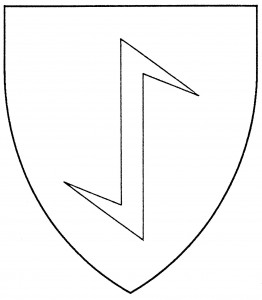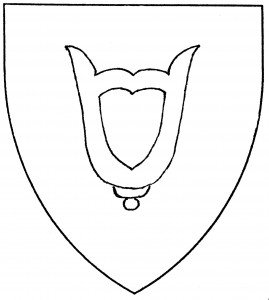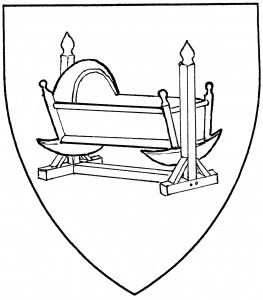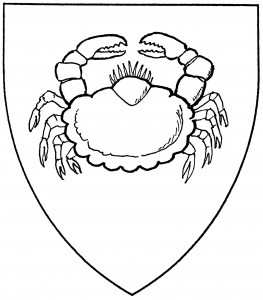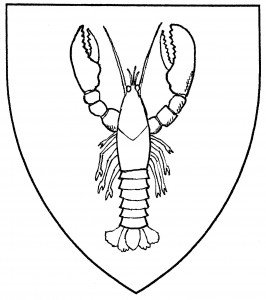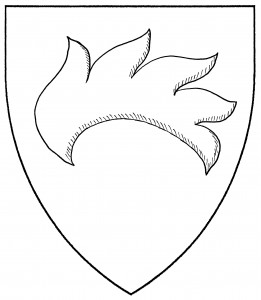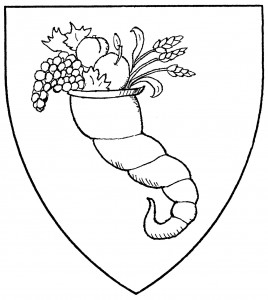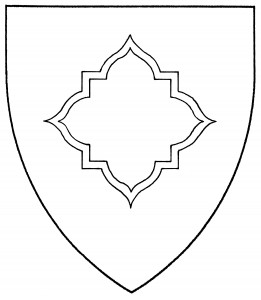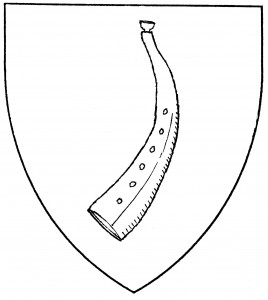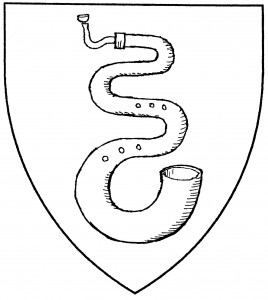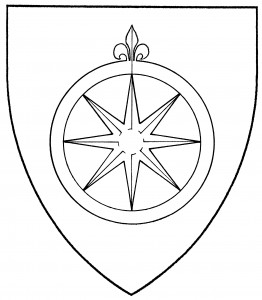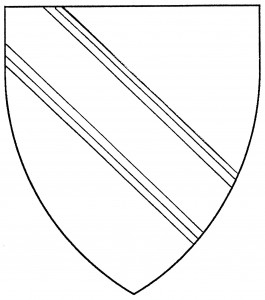
Bend cotised (Period)
Cotising is the addition to either side of an ordinary of a stripe parallel to the ordinary’s edge; these stripes are usually termed “cotises”. The bend was the earliest ordinary to be cotised in medieval heraldry, but the fess and the pale quickly followed; and any double-sided ordinary may be cotised in Society heraldry.
Cotising an ordinary is considered the addition of secondary charges: “a bend between two cotises” is another ways of saying “a bend cotised”. (Alternatively, cotising an ordinary is equivalent to placing it inside another of the same ordinary voided; e.g., “a cross cotised” and “a cross within a cross voided” yield the same emblazon.) In some ways, however, cotising is comparable to a complex line of division; certainly the cotises cannot exist without the central ordinary, and they have nothing to do with any other secondary charges.
Cotises follow the line of their central ordinary by default; e.g., “a fess wavy cotised” will have a fess wavy between cotises wavy. It’s also possible for the cotises to have a different line than their ordinary: e.g., the “bend plain cotised dancetty” in the arms of Clopton, c.1420 [Hope2 46]. Cotises can also be a different tincture than their ordinary, as in the “bend argent cotised Or” in the arms of Cone, 1308 [ANA2 161].
Cotises might have a complex line on the outer edge only: e.g., the “bend plain cotised trefly on the outer edges” in the arms of Lower Alsace, 1493 [Neubecker 188]. Double cotises, as in the arms of Badlesmere, c.1300 [ANA 77], and even triple cotises are also possible, although the latter in only the simplest of armory.
Some ordinaries have special terms for cotising: the cotises for a pale are called “endorses”, and the whole is blazoned “a pale endorsed” or “between endorses”. The cotises for a chevron may also be called “couple-closes”.
Giulia Isabella da Venezia bears: Counter-ermine, a bend cotised argent.
Margriet van Middelburg bears: Gules, two chevronels ermine cotised Or.
Riocus de Uuenetia bears: Azure, a pale Or endorsed argent.
Muiredach MacGregor bears: Vair, a cross cotised gules.
Thomas of Eastbrook bears: Pean, a fess doubly cotised Or.
Rhiannon Annsachd bears: Gules, a saltire cotised Or.
